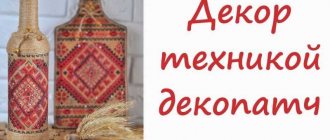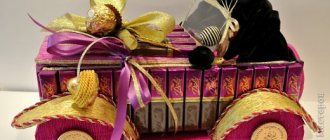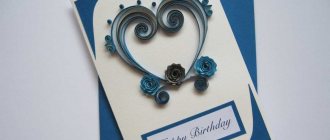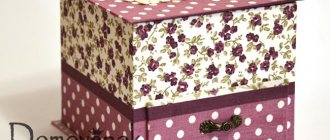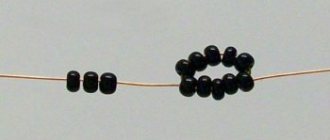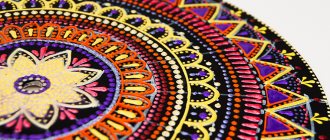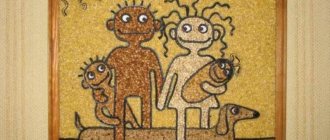What is mehendi and how did this art appear?
Mehendi is henna designs. They are applied to various parts of the body: arms, shoulders, legs, back and stomach. The tradition of decorating oneself with elegant ornaments appeared in India and the Middle East. At first, masters and self-taught amateurs painted women’s legs with henna, and then they began to apply designs to other parts of the body. Moreover, mehendi was prohibited for unmarried girls. At the same time, in India, the wedding ceremony was closely intertwined with the tradition of decorating the bride with henna designs. Before the wedding, the groom gave his future wife a gift - a box of henna. And on the eve of the celebration, the female half of the family painted intricate designs on the bride’s hands and feet, which carried secret messages to the future spouse and were considered sacred. An Indian wedding was celebrated as long as the mehendi was kept on the bride's body.
Often, Indian and Arabic patterns appear similar, but upon closer inspection, differences can be seen. Arabic designs are dominated by floral motifs that cover the entire hand. Indian masters love to depict animals, and most often these are either stylized elephants, symbols of well-being, or peacocks, symbols of beauty.
Choosing the right pattern
How to choose the perfect drawing for yourself? You can first find mehendi on your hand in a photo where there are samples of ready-made paintings. In order to choose the desired scheme, you need to find out the meaning of each drawing, and only then apply it.
- If you want to sleep peacefully and have beautiful and tranquil dreams, then it is recommended that you portray a dream catcher who will protect you during your night's rest.
- If you want to quickly achieve your goal, then a mandala would be the ideal option for you. This place, where the gods live, will give you strength and the opportunity to achieve your goal.
- If you want to acquire fearlessness, draw a wolf, as it is a symbol of courage and fearlessness.
- If you want to get protection from all sides of the world, then the octagon will be the ideal option for you. There is an opinion that it is this geometric figure that carries protection from the north, south, west, east and also mixed directions.
- To protect yourself from the three main troubles (diseases, suffering and natural disasters), then you need to draw a triangle that carries protection in these directions.
READ ALSO: Selection of hairstyles - fashionable haircuts 2018
The meaning of symbols in mehendi designs
The art of drawing henna on the body has roots in the distant past and is closely related to the beliefs of eastern peoples. Geometric patterns, floral patterns, and images of animals applied to the body served as a kind of amulets. Therefore, it is not surprising that the elements of mehendi are deeply symbolic and can contain secret messages that are understandable to those who know how to “read” them.
Here's what the most popular symbols in mehendi mean:
- Peacock - beauty;
- Swan - success;
- The bird is a messenger between heaven and earth;
- Butterfly - upcoming changes;
- The parrot is the messenger of love;
- Dragonfly - renewal, rebirth;
- Fish - women's eyes;
- Scorpio – love and romance;
- Elephant - greatness, prosperity;
- Flower - joy and happiness;
- Leaves and vines - longevity, devotion, vitality;
- Turtle – protection and fertility;
- Snake – enlightenment;
- Ivy – financial well-being;
- Blooming lotus - beauty, grace, sensuality, purity, femininity;
- Sun, moon and stars - long-lasting deep feelings between two devoted partners;
- Cucumber – wealth and luck;
- Bud, bud - the beginning of a new life (usually after the wedding);
- Ripples are water that purifies and brings new life;
- Square – healing from diseases;
- Triangle – protection of body and spirit;
- Circle - stability in life;
Mehendi painting on hand
Temporary henna tattoos on the hand are popular mainly among the fairer sex, since henna painting on the hands looks very gentle and feminine. Also, the fair half of humanity often prefers to draw henna tattoos on the palm and do mehendi on the wrist.
Moreover, special attention is paid to the meaning of the applied image. What henna tattoos on the hand are popular today? Let's highlight 4 of them.
- Patterns. They mean luck on the personal front, love or romantic relationships.
- Lotus. The flower of this beautiful plant is applied by those who need good luck in business.
- Owl. A symbol of wisdom, it indicates the mental qualities of its owner.
- Dream Catcher. It is believed that it protects against evil spirits and protects against damage and the evil eye.
White henna mehendi looks especially stylish; such patterns often attract girls and young ladies. Today, it is very fashionable for girls to make white henna designs on their hands; it symbolizes purity, which is why brides often use such patterns.
Advantages of mehendi over regular tattoos
Traditional tattoos and henna designs are one of the types of decoration of the human body, but mehendi has a number of undeniable advantages compared to tattoos:
- If you want to get a tattoo, but are unsure about which design to choose, you can do mehendi with henna for two to three weeks. During this time, you will understand whether you even want to have a design on your body, and whether you like the one you have chosen.
- People with a low pain threshold, who also dream of getting a tattoo, but are terrified of pain, can apply a henna design. It doesn't hurt at all and is even pleasant.
- Those who are afraid of infection when applying a traditional tattoo can also try this alternative option.
- Parents whose teenage children ask permission to get a tattoo can offer their child mehendi first. After all, the henna design will disappear after a certain time, and with a tattoo, especially a bad one, you will have to live with it.
Mehendi painting on the leg
Henna tattoos on the leg are done not only by women, but also by men. Moreover, despite the fact that such designs are often hidden under clothing, special attention is also paid to the meaning of the applied ornaments.
In this case, it is not even the pattern itself that is important, but the area of the leg on which it is applied, since it carries a certain meaning.
What do these places mean?
- Left leg. An ornament on the left leg indicates that a person is looking for his place in life.
- Right leg. The pattern on the right leg indicates confidence and determination.
- Left foot. The pattern in this place indicates that the person lacks attention.
- Right foot. The image in this area means selfish tendencies.
Types of henna for drawing mehendi
There are two types of henna for tattooing: store-bought and home-made.
The finished artificial mixture contains synthetic dyes, which often cause allergic reactions on the skin of the hands and feet. Therefore, before applying a design to the body, you should check how the skin will react to the composition of the paint. Apply a small amount of henna to the palm or back of your hand and observe how your skin behaves. If the area where henna was applied itches or “burns,” you should immediately remove the composition and treat the irritated area with a soothing cream.
In this case, we can advise you to prepare the mixture for applying mehendi yourself. The paint will turn out natural and will not cause any unpleasant sensations in the tattoo area.
You can distinguish natural henna by color: all dyes that have a shade other than orange or brown are artificial. Such compositions are not used for applying mehendi to pregnant women and children under 14 years of age.
How to draw a tattoo with henna
Some images are especially popular and carry a certain meaning. Here are some of them.
Butterfly. One of the favorite images for women. A symbol of soul, freedom, fragile beauty and love.
The butterfly is often depicted with open wings. They can consist only of outlines and be empty inside. This option turns out to be very light and floating. Or the wings can be painted with an ornate pattern.
Sometimes the butterfly is depicted in profile, with folded wings.
The Dragon. A symbol of greatness, spiritual strength, wisdom and supernatural abilities.
In Asian countries, this mythical creature is an object of veneration. Usually these Hindi are quite large in size.
The image of a dragon can be found on both men and women. In the first case, the drawing is often aggressive and warlike, demonstrating strength and power.
Ornaments for women, as a rule, are distinguished by additional decorative details and unusual solutions.
The selected image well conveys the mood and inner state of a person.
Elephant. Symbolizes wisdom, wealth, luck, courage and power. Sometimes only the head of this animal is depicted, sometimes the entire elephant.
Often the elephant is drawn in profile, with its trunk pointing up or down.
The image of Shri Ganesh is a very popular image - this is a deity in Hinduism with the body of a man and the head of an elephant.
Sun. A symbol of immortality, enlightenment, power, wisdom, royalty, energy. Since ancient times, the sun was considered a deity and was worshiped. This is the reason why a face is often depicted in the center of the sun.
Such ornaments consist of a central part and rays in a circle. It is believed that the closer such an image is to the heart, the stronger its influence on the fate of the owner.
Both women and men depict the sun.
How to prepare mehendi dye at home
You can prepare the mixture for body paintings yourself. To do this you will need the following ingredients:
- 500 ml water;
- 2 tsp. natural ground coffee;
- 2 tbsp. l. black leaf tea;
- 100 gr. natural henna, which is sold in pharmacies or from mehendi artists;
- 2 tsp. lemon juice
- 1 tsp. granulated sugar, which can be replaced with fructose or powdered sugar. They will give the mixture thickness and it will be easy to apply to the skin;
- 5 drops of any essential oil. It could be clove, eucalyptus, lavender or tea tree. You can use only one oil, or you can use 2-3 in combination with each other.
It should be noted that special henna is used for drawing, so store-bought henna for hair coloring is not for mehendi.
Metal utensils are not suitable for preparing the mixture, because... the mixture will simply color them. It is better to take a glass bowl for kneading, and a plastic spoon for stirring.
Preparation:
- Place tea and coffee in a saucepan with water and cook for 1 hour.
- Strain the resulting broth. Place the grounds in a mixing bowl.
- Add henna, butter and sugar to the thickener, mix everything thoroughly.
- Distribute the mehendi paint among cones prepared in advance from foil. The mixture is stored in the refrigerator for 4 months.
How to properly hold a henna cone while drawing
For those who are just beginning to master all the intricacies of applying designs to the body, it is very important to learn how to hold the henna cone correctly. If your hand is uncomfortable, it will quickly get tired and the lines will turn out uneven.
- Before working, you need to cut off the tip of the henna cone, from which the paint will flow out during the work. If the tip of the cone is dirty and henna is difficult to come out of it, you need to clean it with a paper napkin.
- You need to rest your entire hand or the edge of your palm on the table when painting your hands or on your body when painting your stomach or back.
- The paint cone should be placed between the thumb and index finger, at a distance of 4 cm from the tip of the cone. The thumb holds the cone in your hand, and it also regulates the intensity of paint extrusion. You cannot press hard and sharply on the tube of henna, otherwise it will pour out of the cone unevenly, which will ruin the whole job.
- The rest of the hand is relaxed to freely control the drawing process.
- The tip of the cone rests on the middle finger of the hand, and the index finger presses the cone on top. To make the drawing easier, you can additionally lean on your free little finger.
- You should not clamp the tube of paint in your fist, because in this case the hand becomes too tense and the drawing comes out blurry.
- When drawing, the cone should be perpendicular to the surface of the drawing. This is how all the elements of mehendi are performed.
- By holding the cone at an oblique angle, you can only outline the future drawing or draw thin straight or wavy lines.
- When applying mehendi, the cone should be kept at a short distance from the surface of the skin so that the henna flows freely from it and lies in an even layer. If you move the cone, pressing it against the surface, the pattern will be smeared and the skin will be scratched.
Features of mehndi
Mehendi is the application of various designs on the body using special henna, which can be purchased at any cosmetic store. This natural dye is absolutely safe for human health.
Directions in culture
In this form of art, there are several directions that are associated primarily with the region where mehendi originated.
Arabic style - designs made in this style resemble embroidery with alternating floral patterns and beautiful patterns;- North African style - patterns are clear geometric shapes with plant content;
- Indian style - differs from other styles with its intricate patterns and designs;
- Asian style combines patterns and ornaments of North African and Indian styles. It is considered the most gentle and feminine.
Mehendi was applied to the body not only by women, but also by men. Henna painting was used for ritual purposes during funerals and weddings. Moreover, the tradition of wedding painting has been preserved in India to this day. Mehendi is also called mehndi. This type of art in the life of Hindus is a whole ritual to which they devote a lot of time.
At first, only natural henna was used, which after application acquired a brownish-red hue .
Today, carbon black is added to natural dyes to produce darker colors. For mehendi they also use white paint, which has nothing to do with henna. It is prepared on the basis of acrylic and special glue. Patterns are applied to different parts of the body, but mostly they are painted in areas of increased sensitivity: on the arms and legs, less often on the face and stomach.
Mehndi from an Islamic point of view
Sharia prohibits Muslims from applying tattoos to their bodies, since a person interferes and changes the structure of the skin, and this is unacceptable for Islam. Allah does not approve of any interference in the bodies He created. But this does not apply to mehendi.
The fact is that henna is a natural dye that is absorbed only into the top layer of the skin. After 1-3 weeks it is washed off. Henna painting, according to Sharia law, is even considered useful. Mostly mehndi is decorated by married women on their legs and arms to further attract the attention of their husband. Muslim women should hide patterns made with natural paint from prying eyes using gloves or socks. Unmarried young ladies are not at all recommended to do mehendi. After all, they don’t need to attract anyone’s attention.
The meaning of patterns and ornaments
Each pattern in the art of mehendi has its own meaning. Therefore, before painting with henna on the body, you need to familiarize yourself with the meaning of the selected design. .
- bracelet - symbolizes good luck in love relationships;
- flowers - emphasize femininity and bring happiness;
- crown - a royal accessory, a symbol of greatness, leadership qualities, the desire to rule;
- butterfly - brings health, success;
- peacock - personifies love, ardor and heat in a love relationship;
- birds - the desire for freedom, action, achieving goals and the thirst to live and enjoy every day;
- mandala is a symbol of wisdom, understanding of the entire Universe;
- five-pointed star - symbol of the 5 elements;
- circle - 1 round of life;
- curved lines - overcoming all possible obstacles and achieving goals;
- dots are a symbol of love and fidelity towards your husband;
- the shell is a symbol of victory.
Stages of applying mehendi
The process of drawing henna on the body consists of several stages:
- Preparing the skin for drawing. First you need to clean the area of the future image and moisturize it with any essential oil. Then apply lemon juice to a cotton pad and wipe the surface to make the design more vibrant.
- The first mehendi is easiest to draw using special stencils. They can be purchased at the store or made yourself from self-adhesive film. After the skin is prepared for painting, you need to paste the stencil. If drawing is done according to a previously prepared sketch, you can outline the image with thin lines, which are applied at an oblique angle of a cone to the surface of the skin.
- The next stage is the actual drawing itself. Using the correct position of the cone in the hand, a henna design is made in a thick layer without scratching the skin. If a mistake is made while drawing, the paint can be removed with a cotton swab soaked in hydrogen peroxide.
- After completing the work, the stencil is removed and the mehendi is left until the paint dries completely. After just 15-20 minutes, the henna begins to dry and crumble, leaving an imprinted pattern on the skin. Crusts can be easily removed with a paper napkin. Under no circumstances should they be washed off with soapy water. This will cause the drawing to become discolored. At this time, you can apply a mixture of lemon juice and sugar to the tattoo, it will moisturize and become even darker. Although you can reapply a layer of paint, for the same purpose - to make the drawing brighter.
- After the paint has completely dried and the remaining henna has been removed, the design is moistened again with oil or cream, because dried henna tightens the skin.
- The color of mehendi appears within 24-72 hours after it is applied to the body.
How to remove henna tattoo
The red-brown color of mehendi, depending on the quality of the henna, remains on the body for 1-3 weeks. At this time, the drawing can be wetted, but do not rub it with a scrub or sponge too much.
Over time, the mehendi will fade, and most likely you will want to remove it. This can be done in the following ways:
- erase the remaining drawings with a cotton pad soaked in alcohol or hydrogen peroxide;
- wash your hands thoroughly with a sponge and soap;
- apply toothpaste to the mehendi and rub thoroughly, then rinse the paste with water;
- Mix baking soda with lemon juice, apply the mixture to the drawing and leave until completely dry. Then wash your hands with warm water.
After removing the henna design, it is advisable to treat the skin with a moisturizer or essential oil, because All methods of removing mehendi dry out the skin.
Tips for beginners
Each mehendi artist has his own secrets for preparing the mixture for drawings on the skin, the technique of applying the image and how to care for it. Here are just a few of them:
- The intensity of mehendi color varies on different parts of the body. The patterns on the palms are always very dark, even black, but on the back, on the contrary, they are lighter. Henna also gives a less intense color on the forearms and legs.
Natural henna powder has a distinct herbal odor and green color, and the coloring mixture it produces is brown or orange. Under no circumstances should it be black.
- Before you start drawing mehendi on the skin, you should practice performing individual elements of the patterns and determine the correct position of the henna cone in your hand. It's best to practice on a piece of paper first. Don’t skimp on henna, buy one tube of henna specifically for training and use it right away to “put your hand on it.” When you begin to get more or less neat lines on paper, you can try drawing on any glass surface. The more you practice, the steadier your hand, the clearer your lines, and the neater your patterns.
- You should start mastering the art of mehendi with the simplest images, consisting of straight and wavy lines, polka dots and geometric shapes. Over time, having become skilled at simple patterns, you can take on more advanced designs.
- If you are not allergic to a store-bought mehendi mixture, you can safely use it for drawing. Moreover, artificial henna has a huge number of colors: black, blue, green, cherry, etc. However, keep in mind that designs made with natural paint, prepared independently, retain their brightness longer.
- If you apply a drawing to yourself, for example, on your hand, then you should move from the farthest point towards yourself, i.e. from fingers to wrist. Likewise, if you are drawing on another person's body, work your way towards applying the mehendi from the furthest edge towards you. If it is a hand, then from the wrist to the fingertips.
- Drawings made with henna-based paint dry completely after a few hours. It all depends on the composition of the painting mixture. To make your tattoo brighter and last longer, give the henna 6-8 hours to dry. You can do mehendi in the evening and leave it overnight. This will make the drawing more saturated. Again, in the first few hours the tattoo will not come into contact with water, which is also good for mehendi.
- The duration of wearing a henna design depends on many factors: the quality of the mixture for drawing, and the drying time of the mehendi and its care. As for skin type, in this case girls with dry skin are lucky, because their henna tattoo lasts much longer. The location of the pattern also matters: on the arms and legs, mehendi retains its brightness longer, because these parts of the body are warm and slightly damp. As for the climate, this decoration loves warmth.
What color pattern can you achieve?
Henna designs on the body can come out in different shades - it depends on three nuances: the time the paste is kept, the skin’s reaction to the dye, and the place where the image is applied.
Immediately after removing the paint, the ornament will turn out to be a pale orange color; after 4-5 hours it will darken and become bright orange, and then after 2-3 days its shade will gradually turn into a red-beige color.
Depending on your skin type, the final result of mehendi at home can be either deep red or dark brown. The brightest images appear on dense areas of the body (arms and legs).
How long does a henna tattoo last? It also depends on how your skin reacts and where you decide to draw the pattern. If we talk about the average period of time, then a henna tattoo on the stomach, on the back and under the chest lasts from three to seven days, and on the arms and legs - from one week to two. Then the paint gradually fades and disappears without leaving a trace on the skin.
Interesting: Beautiful small tattoos for girls
